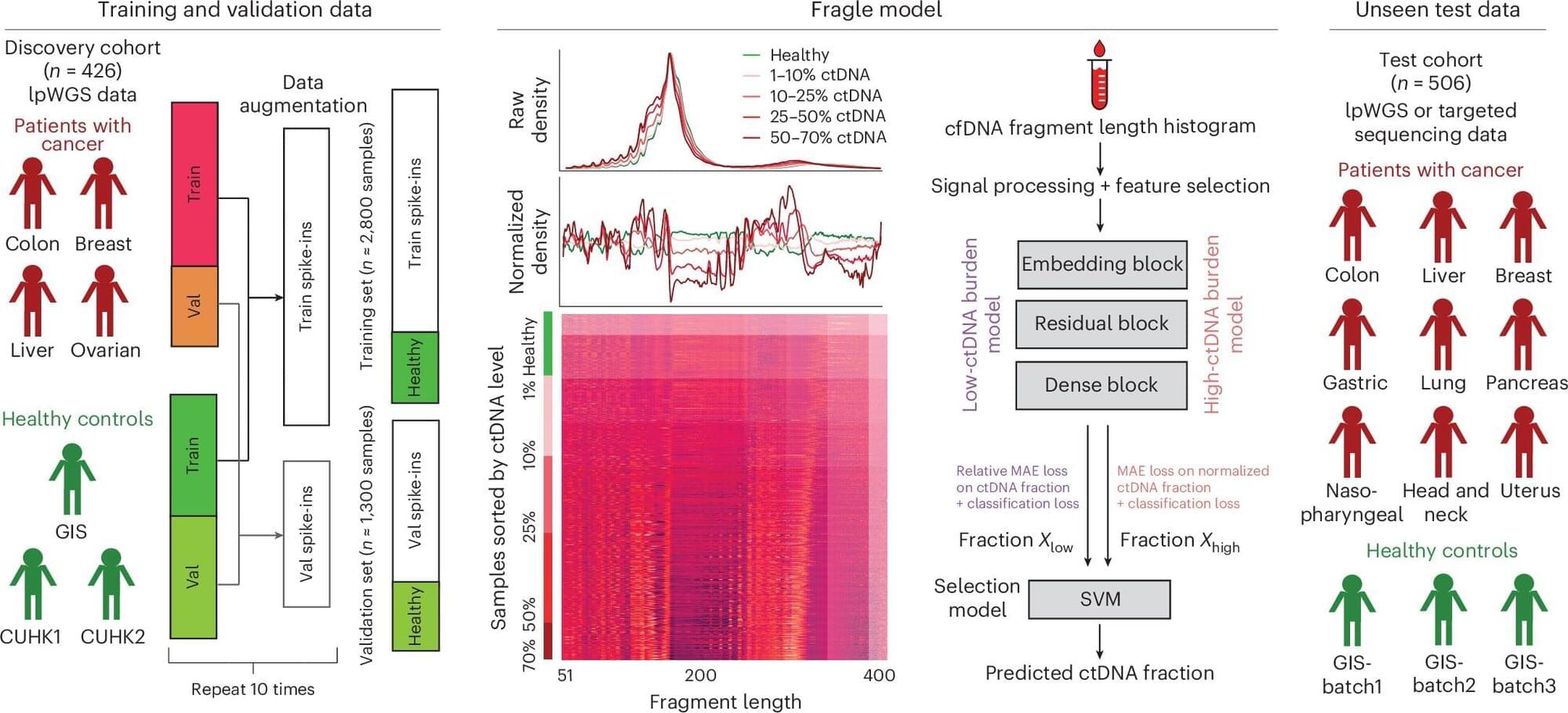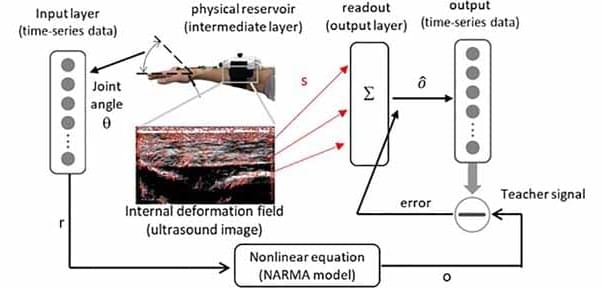New research suggests the brain uses a learning rule at inhibitory synapses to block out distractions during memory replay. This process enables the hippocampus to prioritize useful patterns over random noise, helping build more generalizable and reliable memories.
Scientists from the A*STAR Genome Institute of Singapore (A*STAR GIS) have developed a new artificial intelligence (AI)-based method called “Fragle” that makes tracking cancer easier and faster using blood tests.
Requiring only a small blood sample, this method analyzes the size of DNA fragments in the blood to reveal distinct patterns that differentiate cancer DNA from healthy DNA, helping doctors track cancer treatment response more accurately and frequently. The research was published in Nature Biomedical Engineering in March 2025.
Existing methods for measuring cancer DNA in the blood, also known as circulating tumor DNA (ctDNA), often require complex and expensive DNA sequencing to screen for common cancer mutations. However, because cancer mutations vary between patients, test results can be inconsistent, making it difficult for doctors to track cancer treatment response with blood tests effectively.
An international study has, for the first time, revealed a strong and direct link between the rise of antibiotic-resistant bacteria and universal disinfection procedures applied to patients in intensive care units. Published in The Lancet Microbe, the study calls for a reassessment of health care guidelines on the widespread use of disinfectants.
“Our research highlights the unintended consequences of universal decolonization in a global context where antibiotic resistance is an increasing threat,” says Marco Oggioni, professor at the Department of Pharmacy and Biotechnology at the University of Bologna and one of the study’s authors. “Coordinated efforts to prevent antibiotic-resistant infections are crucial, but they must not prevent us from critically re-evaluating the tools we use to achieve these goals.”
Universal decolonization is a preventive procedure applied to patients upon admission to intensive care. The entire body is disinfected with chlorhexidine—a commonly used antiseptic also employed to sanitize medical devices and hospital surfaces—and an additional nasal treatment is administered with another disinfectant, mupirocin.
We have long taken it for granted that gravity is one of the basic forces of nature – one of the invisible threads that keeps the universe stitched together. But suppose that this is not true. Suppose the law of gravity is simply an echo of something more fundamental: a byproduct of the universe operating under a computer-like code.
That is the premise of my latest research, published in the journal AIP Advances. It suggests that gravity is not a mysterious force that attracts objects towards one another, but the product of an informational law of nature that I call the second law of infodynamics.
It is a notion that seems like science fiction – but one that is based in physics and evidence that the universe appears to be operating suspiciously like a computer simulation.
Physical reservoir computing refers to the concept of using nonlinear physical systems as computational resources to achieve complex information processing. This approach exploits the intrinsic properties of physical systems such as their nonlinearity and memory to perform computational tasks. Soft biological tissues possess characteristics such as stress-strain nonlinearity and viscoelasticity that satisfy the requirements of physical reservoir computing. This study evaluates the potential of human soft biological tissues as physical reservoirs for information processing. Particularly, it determines the feasibility of using the inherent dynamics of human soft tissues as a physical reservoir to emulate nonlinear dynamic systems. In this concept, the deformation field within the muscle, which is obtained from ultrasound images, represented the state of the reservoir. The findings indicate that the dynamics of human soft tissue have a positive impact on the computational task of emulating nonlinear dynamic systems. Specifically, our system outperformed the simple LR model for the task. Simple LR models based on raw inputs, which do not account for the dynamics of soft tissue, fail to emulate the target dynamical system (relative error on the order of <inline-formula xmlns:mml=“http://www.w3.org/1998/Math/MathML” xmlns:xlink=“http://www.w3.org/1999/xlink”> <tex-math notation=“LaTeX”>$10^{-2}$ </tex-math></inline-formula>). By contrast, the emulation results obtained using our system closely approximated the target dynamics (relative error on the order of <inline-formula xmlns:mml=“http://www.w3.org/1998/Math/MathML” xmlns:xlink=“http://www.w3.org/1999/xlink”> <tex-math notation=“LaTeX”>$10^{-3}$ </tex-math></inline-formula>). These results suggest that the soft tissue dynamics contribute to the successful emulation of the nonlinear equation. This study suggests that human soft tissues can be used as a potential computational resource. Soft tissues are found throughout the human body. Therefore, if computational processing is delegated to biological tissues, it could lead to a distributed computation system for human-assisted devices.
The chairman emeritus of the Estée Lauder Companies has made a $5 million gift to the University of Arizona Cancer Center. Leonard A. Lauder’s gift supports the clinical and translational research of David S. Alberts, M.D., an expert in ovarian cancer research and treatment.
University of Arizona Health Sciences researchers are harnessing artificial intelligence and wearable tech to forecast labor, detect stress and transform how we monitor our health.
A photoswitchable solvatochromic dye has been synthesized, comprising a Nile Red fluorophore and a spironaphthoxazine photoswitch. Visible light super-resolution RESOLFT microscopy permits ordered an…
Jason Crawford
Posted in futurism | Leave a Comment on Jason Crawford
Japanese researchers have successfully eliminated the extra chromosome responsible for Down syndrome using CRISPR gene editing.









